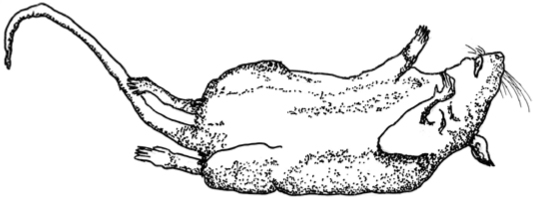Those deadly salts of thallium, so green of line and flame,
No taste or smell, killed rats as well! The Pale Horse fueled their fame.
Take Prussian Blue when e’er in doubt,

Those deadly salts of thallium, so green of line and flame,
No taste or smell, killed rats as well! The Pale Horse fueled their fame.
Take Prussian Blue when e’er in doubt,
GROUP 13 METAL
Thallium is renowned for the murderous toxicity of its salts. English scientist William Crookes (1832–1919) discovered the element in 1861, spotting its telltale green spectral line during his spectroscopic analysis of waste products deposited during the manufacture of sulfuric acid (H2SO4). Thallium’s salts burn with an intense green flame. Crookes named his find after thallos, the Greek word for a green twig or shoot. Around the same time, French physicist Claude-Auguste Lamy (1820–1878) also claimed the element’s discovery. Lamy’s claim was accepted by the French Academy, and he was even awarded a medal at the London International Exhibition in 1862. But forceful protests by Crookes ensured that he was awarded a medal too!
Thallium sulfate is tasteless and odorless, so it’s easy to understand why it might appeal to those contemplating murder by poison (ingesting as little as 800 mg of the salt will kill you). Thallium’s sulfate salt has also been used as an effective rat poison, although its domestic use is now banned in most developed countries.

Thallium’s notoriety (or maybe even its popularity?) as a poison might have been enhanced by the English crime writer Agatha Christie. She described the symptoms of thallium poisoning in her 1961 detective novel, The Pale Horse. Thallium poisoning is a somewhat prolonged affair. It begins with mere cold-like symptoms but progresses insidiously and evermore painfully toward death over the following days. Victims experience disruption of their central nervous and gastrointestinal systems and suffer from vomiting, diarrhea, “pins and needles” in the feet, joint pains, slurred speech, insomnia, symptoms of diabetes, and hair loss.
Thallium’s toxicity is due to its ability to displace the vital element potassium from many sites within the body, most critically those in the central nervous system. An antidote for thallium poisoning didn’t exist until the early 1970s. It was then that the blue ink dye Prussian blue was first shown to strongly bind thallium, facilitating its excretion from the body.
Thallium can be absorbed through the skin, so those careless enough to handle its compounds without gloves run the risk of losing their fingernails! Although the symptoms described in the previous section might not immediately prompt a diagnosis of thallium poisoning, treatment with Prussian blue is strongly recommended in cases where the patient (or victim!) also shows signs of hair loss.
two-oh-one
Despite its otherwise murderous and toxic reputation, thallium has at least one potentially lifesaving application: it can help diagnose heart disease. When its radioactive isotope, thallium-201, is injected into a patient’s bloodstream, the isotope decays by emitting low-energy gamma rays that are then detected by a scintillation counter. The scintillation counter contains a material (for example, thallium-activated sodium iodide) that produces flashes or sparkles of light (known as scintillations) when the low-energy gamma rays come in contact with it. The greater the patient’s blood flow is within a particular region of heart muscle, the higher the scintillation count. But scintillations will only be detected in regions of heart muscle adequately supplied with the radioactive blood. So the lack of scintillations within a given area of the heart exposes the extent to which muscle is damaged. Thallium-201’s short half-life (around 73 hours) ensures that the toxic element disappears from the patient’s body long before it has a chance to do irreparable damage.